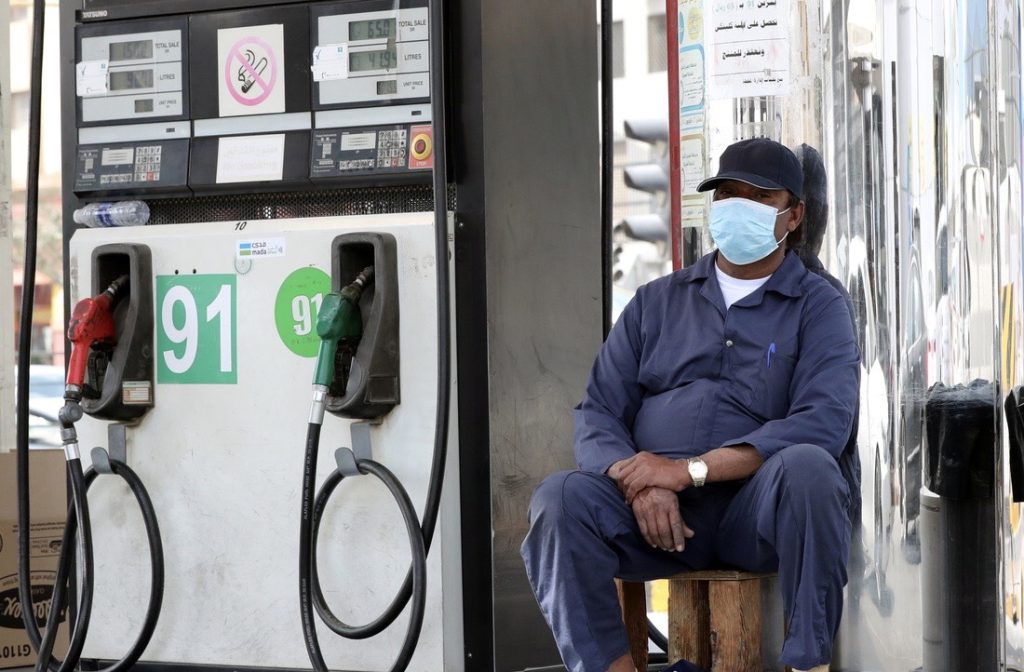To say this pandemic poses a threat of serious losses to the Petroleum Industry worldwide might not adequately capture the sheer numeric magnitude of the shortfall for this particular industry. We are talking about an industry where small change is spoken about in the billions so you’d have to imagine what happens when the price per barrel of crude oil keeps plummeting past 20%.
And that’s about all I can speculate with this because the signs are daunting in this respect and I had to put in some 2 cents on this column… this time through Peter Yamborigya, Director of Acquisitions & Partnerships at Maxwell Investments Group. He is also the Country Manager for the Africa Centre for Energy Research & Economic Intelligence (ACEREI) and an Adjunct Lecturer at the British College for Technology and Commerce (BCTC).
SHELL has declared force majeure on its exportation of crude oil from Nigeria’s Forcados terminal. After weeks of writing on the novel coronavirus and how it relates to Force Majeure and Commercial Impracticability, Peter and I started talking, as we have during this lockdown period. Conversations with Peter during this lockdown period have centred around petroleum and power projects, energy policy implementations, development economics and its applications.
Enjoy the read!
♕ —- ♕ —- ♕ —- ♕ —- ♕ —- ♕ —- ♕ —- ♕ —- ♕

The Coronavirus also known as COVID-19 has brought about untold difficulties to individuals, governments and private organizations across the globe. In the wake of this pandemic, there has been stricter travel restrictions affecting many businesses and operations. The global oil and gas industry is among the hardest hit amidst the growing uneasiness the world currently finds itself.
On the top of all this is the impact on the prices of crude oil which has seen a historic downward trajectory never before experienced. Price volatility has always been a challenging element of the oil and gas market but has rarely been more extreme than it is today. COVID19-led disruptions to demand, combined with its dramatic impact on financial markets worldwide, have led to rampant price swings. Social distancing, combined with partial to full lockdowns, have also impacted the lives of workers requiring some dramatic adjustments. Safe work systems also have changed quickly in response to the pandemic, requiring companies to find new ways to safeguard their staff and families.
Many participants in the oil and gas industry have seen sales and revenue projections crash, this time due to the upset of demand associated with COVID-19 and the ever-geopolitical war in prices between Russia and Saudi Arabia. As to what path lies ahead for the industry in the coming months and years, it would be up to the individual organizations’ resilience and government support systems within their respective jurisdictions.
In this article, a cursory look is dipped deeper into the various sections within the industry to understand what is happening currently and a thought on how they could get out of it. As Maxwell Ampong is very fond of saying, these are all facts and this is an opinion piece.
OPERATIONAL DISRUPTION AND SUPPLY CHAIN RISK
The crux of the oil and gas industry is largely the effectiveness of its supply chain network which connects the dots from production to the final consumer. As much as oil and gas activities are generally considered essential activities by governments and have been mostly exempt from the lockdown measures, it is not completely isolated from the consequences of these restrictions.
Continued operations will likely become increasingly difficult due to workforce shortages as employees are infected by the coronavirus and the practical difficulties in many cases of social distancing and movement restrictions. Companies therefore are preparing to or already are operating with skeleton crews to continue operations. This is currently offsetting and disrupting planned maintenance, inspection, repair and replacement of equipment and drilling activities.
For this period, companies would also have to look at third-party contractors who work on-site and structure an alignment of operational activities with COVID-19 policies. One has to even stomach the prospect of sealing off oil wells as a result of the reduced number of personnel on drilling rigs falling below the level required by health and safety regulations and the reasonable and prudent operator standards.
Speaking of supply chain disruptions, thought beyond the initial supplier in the supply chain will be required to identify who in the chain has which level of the supply chain risks at play here, as disruption among second-tier and third-tier suppliers could ultimately affect both service companies and operators.
UNEMPLOYMENT DUE TO ACTIVATION OF FORCE MAJEURE CLAUSES
The Covid-19 currently shows no end in sight, but there is definitely an end to all this. Still, as the situation deteriorates, many industry participants are reaching for the force majeure (FM) provisions in their key contracts to excuse failure to perform or to exit. Whilst these are typically designed to cover a situation where contractual performance is impossible, difficult or onerous to perform as a result of exceptional events outside either party’s control (for example a global pandemic), relying on an FM clause is very heavily dependent on the factual circumstances and the drafting of the specific clause. The choice of the contract’s governing law will also influence the availability of FM and similar reliefs including possible change of law relief.
Depending on the situation, there are also likely to be several steps that a party seeking to claim FM should take in order to maximize its chances of success, for example: identify the specific measures (as opposed to coronavirus in general) and evidence the actual impact these measures have had on it; mitigate the impact of such measures; and submit the contractually required notices on time. The end game however is that some workers are going to made redundant or dismissed for no activity. This could ultimately balloon the unemployment basket.
As instability and uncertainty increase, so will the number and types of disputes due to businesses becoming unable (or unwilling) to perform existing contractual obligations.
COUNTERPARTY CREDIT MEASURE OUTLOOK
As the pandemic season continues, the industry must brace itself for a renewed focus on credit risk associated with counterparties as financial stress flows through the sector. This suggests that an extension of payment terms and innovative financing structures, which leverage on stronger balance sheets and help sustain weak counterparties while mitigating creditors’ risk, may again become prominent.
GOVERNMENT INTERVENTIONS AND SUPPORT MEASURES
For the fact that some sections of society cannot function without the energy from oil and gas it solely relies on, it has become necessary for governments to intervene in order to ensure continued supply. As energy supply is generally considered a matter of national interest, measures are increasingly being implemented at a national level to provide some relief to the local oil and gas industry from the adverse impact of COVID-19.
Some countries have already activated measures taken to date to ameliorate the impact of the pandemic. Example of producing countries already implementing one measure or the other include Angola, Argentina, Australia, Brazil, Canada, China, Colombia, Egypt, Equatorial Guinea, Indonesia, Mexico, Mozambique, Norway, Pakistan, Russia, Saudi Arabia, South Africa, the United Arab Emirates, the UK and the US.
The COVID-19 pandemic is shattering long-held assumptions about the global economic and political order, with a clear shift towards increased direct government involvement in local economies and an increased risk of nationalization worldwide.
BORROWING BASE FINANCING FACILITIES
The fall in the oil price will put many upstream producers into default under their borrowing base facilities at the next borrowing base redetermination. Producers may be sheltered from the risk of payment default for as long as any commodity price hedges remain in place and are in the money.
This implies lenders will have to decide whether to either: (1) waive the default (typically as part of a debt restructuring on the basis of “amend and extend”); or (2) enforce their security rights.
In light of the 2014/15 price slump, given the practical difficulties and risks associated with enforcement, it is expected that lenders would opt for the former in most circumstances. Banks worldwide have strengthened their balance sheets significantly since the 2008 financial crisis and our Banking Sector here in Ghana recently went through a thorough overhaul that saw to them recapitalizing. All these gives the Banks more scope and ability to support borrowers through this period. Conversely, those banks looking to reduce their exposure to the resources sector, in response to the emergency and the energy transition, may look hard for an exit from distressed loans.
DISTRESSED MERGERS & ACQUISITIONS
Consolidation through the acquisition of distressed assets is a textbook response to slumps in the industry; and some did it successfully following the 2014/15 price fall. Given the speed, scale and volatility of the crisis, it is premature to gauge the buy side interest. In many countries, governments have tightened their oversight of foreign investment rules to protect vulnerable domestic companies laid low by the crisis. Foreign acquirers will need to navigate these new rules. Likewise, acquirers should consider whether any government support received by the target comes with conditions that impede any planned post-merger restructuring and integration. As always, understanding the existing debt package and anticipating/negotiating the lender reaction to a new (solvent) buyer will be important, and the absence of contractual protections under the acquisition agreement will need to be borne in mind.
Finally, given the practical difficulties of due diligence in the coming months, we wonder whether any buyers will prefer assets they already know and in any countries which they assess as being at lower risk of any unforeseen second wave of COVID-19.
IMPACT ON ENERGY TRANSITION
It is hard to measure the effect this oil price crash and COVID-19 has and will have on the delivery of governments’ decarbonization agendas. The International Energy Agency, EU leaders and various asset managers have all reaffirmed their commitments in different ways to the energy transition. News is also expected from the European Commission over the coming days. This would help clear the way forward to how the industry will look like in the coming months, if not years.


